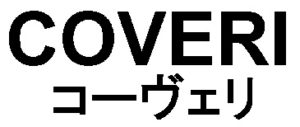The Japan Patent Office (JPO) ordered to dismiss an invalidation trial against IR no. 1238820 for word mark “Marie-Antoinette” by finding the mark shall be irrevocable under Article 4(1)(vii) of the Trademark Law. [case no. 2017-68002]
Tempting Brands Netherlands B.V. (NL), filed an international registration for the mark over goods of “Bleaching preparations [deodorants] for cosmetic purposes; perfumery, essential oils, cosmetics, hair lotions; dentifrices; cosmetic soaps, soaps for personal use; douching preparations for personal sanitary or deodorant purposes [toiletries]” in class 3 and others in class 9, 18 and 25 on Dec. 5, 2014 claiming priority based on Benelux TM application dated Aug. 22, 2014, and designating Japan which granted registration of the mark on Feb. 10, 2017.
To challenge, an invalidation trail was filed against the mark. Claimant, a Japanese business entity asserted the mark shall be invalidated in violation of Article 4(1)(vii) of the Trademark Law on the grounds that the mark “Marie-Antoinette” written in a plain letter represents the late ill-fated queen consort of King Louis XVI of France who has been highly well-known as a symbolic queen of beauty among relevant public not only in France but also Japan and other countries. If so, it is extremely harmful to prestige of “Marie Antoinette” and social affections on the historical figure to admit an exclusive right on the name to any unrelated entity. It may inevitably offend public order and morals
Article 4(1)(vii) of the Trademark Law prohibits any mark likely to cause damage to public order or morality from registration. Trademark Examination Guidelines provides “Name of a well-known or famous historical personage likely to free-ride on public measures derivative from the personage and damage the public interests in face” as an example to apply the article.
The Invalidation Trial Board decided the mark shall not be subject to the article due to the following reason.
It is unquestionable that “Marie-Antoinette” represents a name of queen consort of King Louis XVI of France and becomes famous in France as well as Japan. In the meantime, the Board could not see a fact that the name has been made use of for revitalization of local communities or tourism industry. If so, it is quite unlikely to happen that the mark could offend public order and morals when used on goods of class 3. Besides, the Board has no reason to believe registration of the mark would cause disrespect for France and French people as well as international fidelity. Besides, there finds no circumstances to conclude the mark is proscribed to use by other legislation and applicant apparently filed the mark with a malice or fraudulent intent to be blamed. Based on the foregoing, the international registration shall be deemed valid since the Board was unable to find out any relevant facts to apply the article on the case.
It is not freely allowed to use and register a name of historical personage as trademark. JPO rejected “Darwin” and “Monet” based on Article 4(1)(vii), but allowed registration of “Elvis”.





